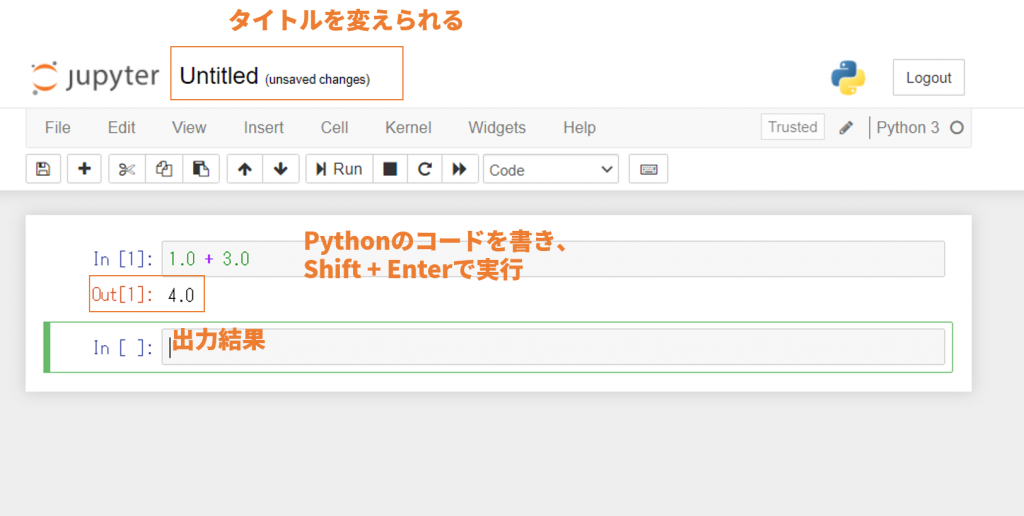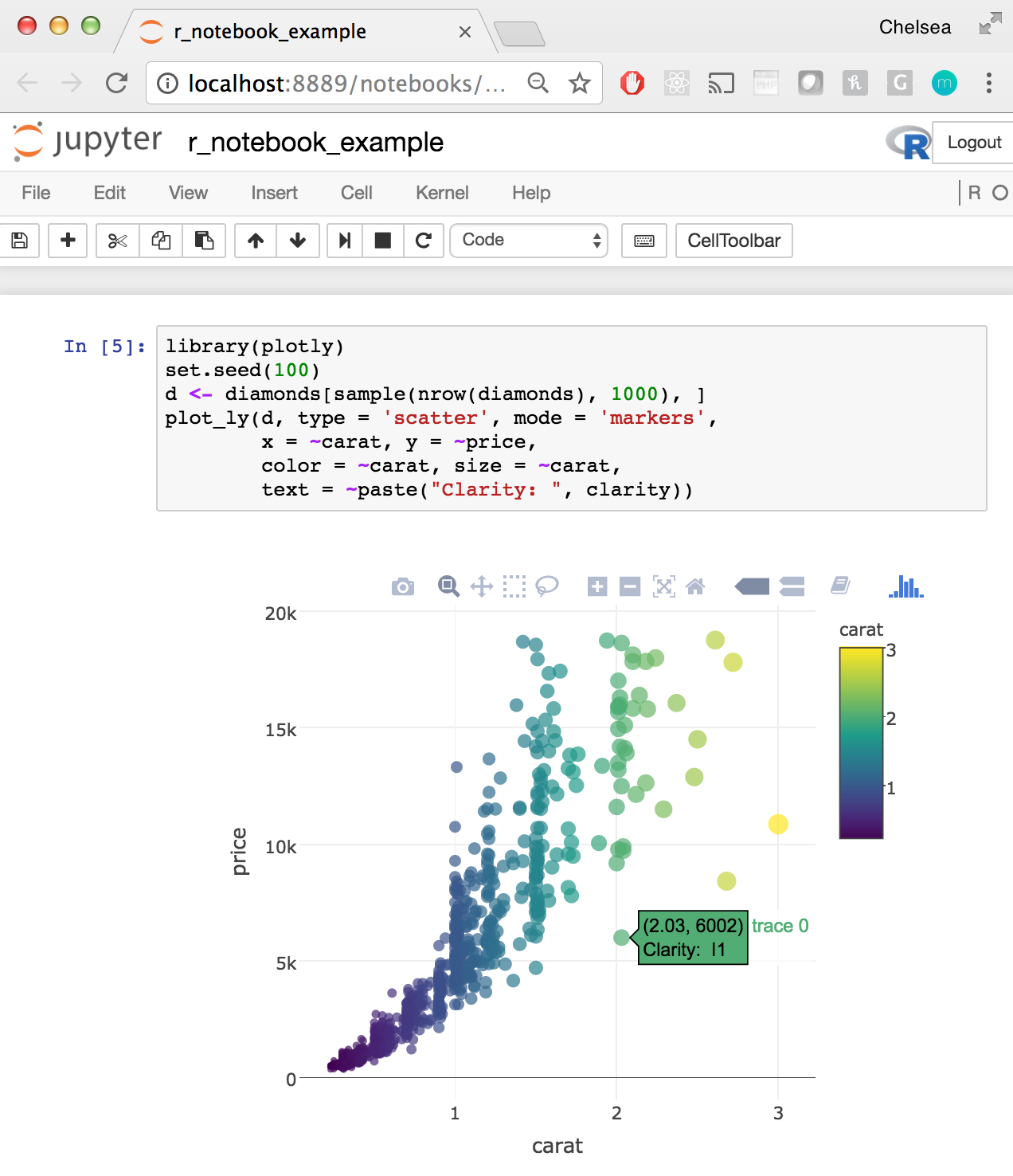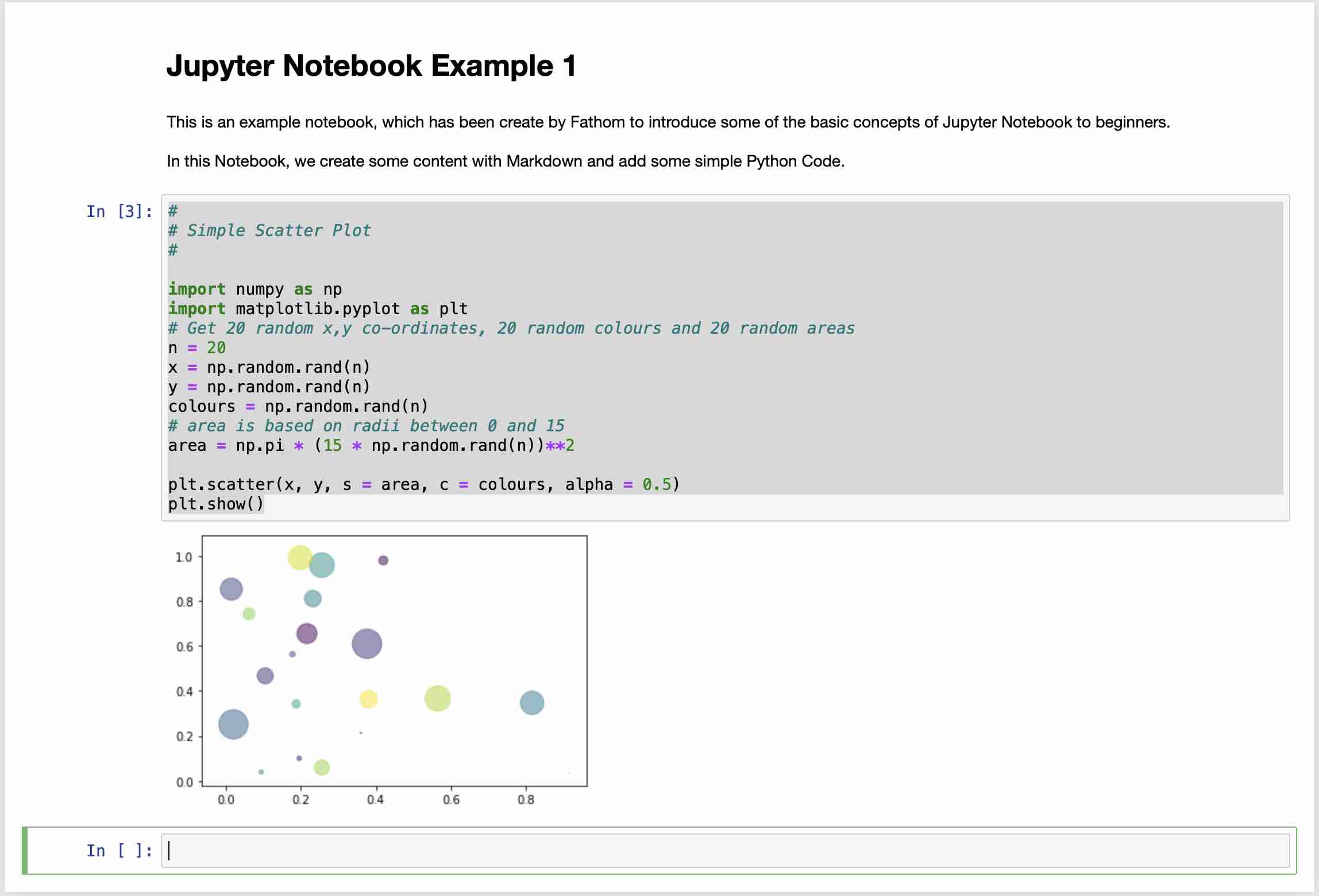

- #Python install jupyter notebook for free
- #Python install jupyter notebook how to
- #Python install jupyter notebook code
- #Python install jupyter notebook windows
Step 3) Keep settings default in next screen and click Next: Add Storage This server provides a good tradeoff between computation, memory and network performance.
#Python install jupyter notebook for free
AWS offers for free this virtual machine equipped with 1 vCPU and 1 GB of memory. Note that AWS has a server dedicated to deep learning such as:Īll of them Comes with latest binaries of deep learning frameworks pre-installed in separate virtual environments:įully-configured with NVidia CUDA, cuDNN and NCCL as well as Intel MKL-DNN It contains the information required to successfully starts an instance that run on a virtual server stored in the cloud. The current instance is 2018.03.0.ĪMI stands for Amazon Machine Image. The default server is enough for your need. You are finally ready to create the instance Step 4) The newly created Security Group will be listed
#Python install jupyter notebook windows
For Windows or Linux users, please proceed to PART 2 Step 4) Copy and paste it into the folder key. Step 2) In the panel and click on Key Pairs If you do not have an account at AWS, create a free account here.
#Python install jupyter notebook how to
To run the code, you can click on Cell and then Run Cells and Select Belowīelow is a step by step process on how to install and run Jupyter Notebook on AWS:
#Python install jupyter notebook code
There are two ways to run a code in Jupyter: Inside the cell, you can write print("Guru99!") You first line of code will be to print Guru99!. The blue color, however, indicates you are in executing mode. The green color mean you are in the editing mode. Step 5) You are ready to write your first line of code. Jupyter reads the code one line after another.įor instance, if you write following code inside a cell.

Inside a cell, you can write a single line of code. In AWS Jupyter Notebook, you write codes, annotation or text inside the cells. Let’s rename it by clicking on File and Rename This is the default name given by Jupyter. So far, your notebook is called Untiltled.ipynb. Step 4) You are inside the Jupyter environment.

Step 3) Inside this folder, you will create your first notebook. Step 2) You can see the new folder inside the environment.

The app can be used locally, meaning you don’t need internet access, or a remote server.Įach computation is done via a kernel. The Jupyter Notebook App is the interface where you can write your scripts and codes through your web browser. In this Jupyter Notebook tutorial, you will learn. It is also useful for sharing interactive algorithms with your audience for teaching or demonstrating purpose. It provides a convenient way to write paragraph, equations, titles, links and figures to run data analysis. Jupyter Notebook is an open-source web application for writing and sharing live codes, equations, visualizations with rich text elements.


 0 kommentar(er)
0 kommentar(er)
